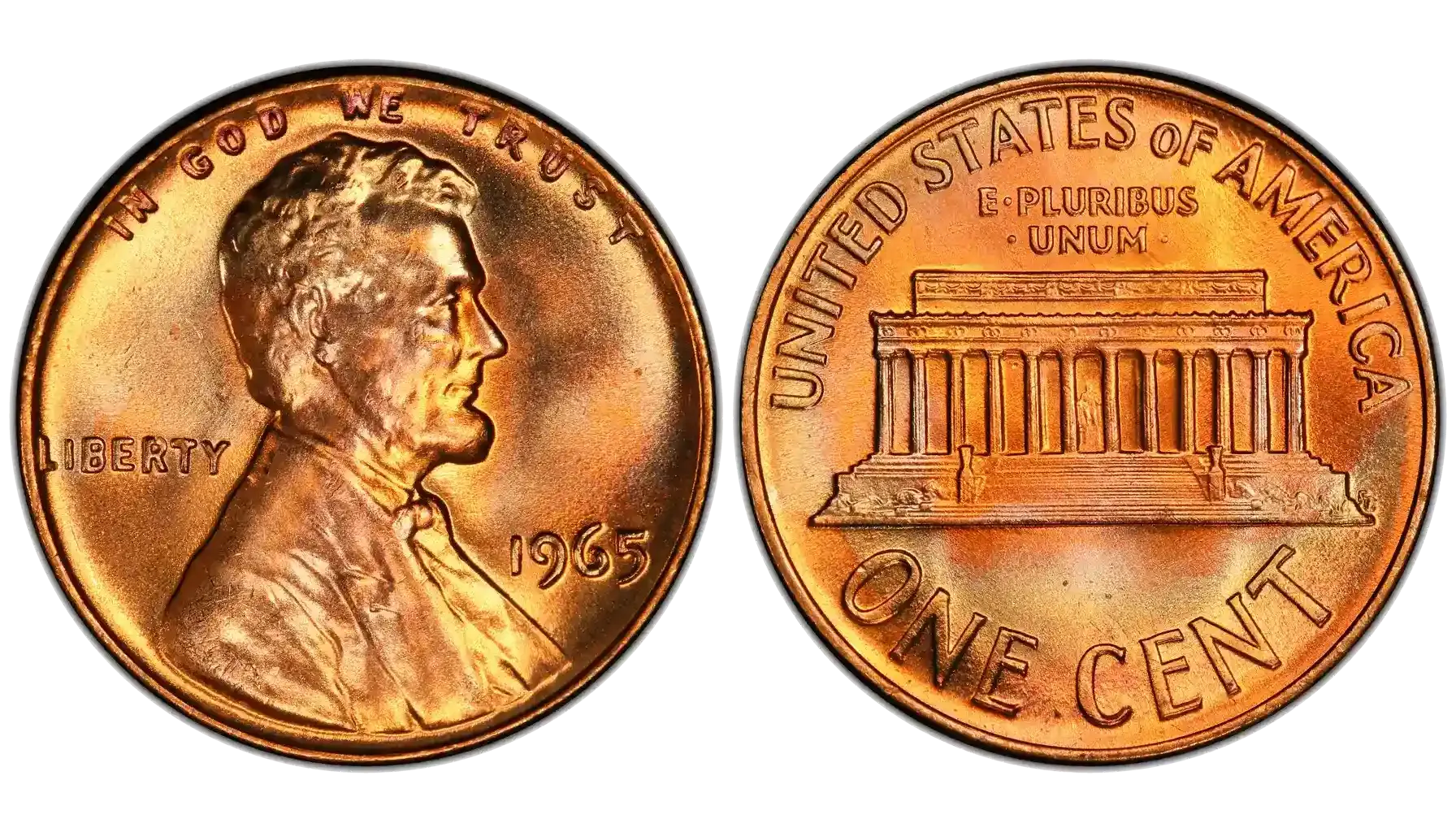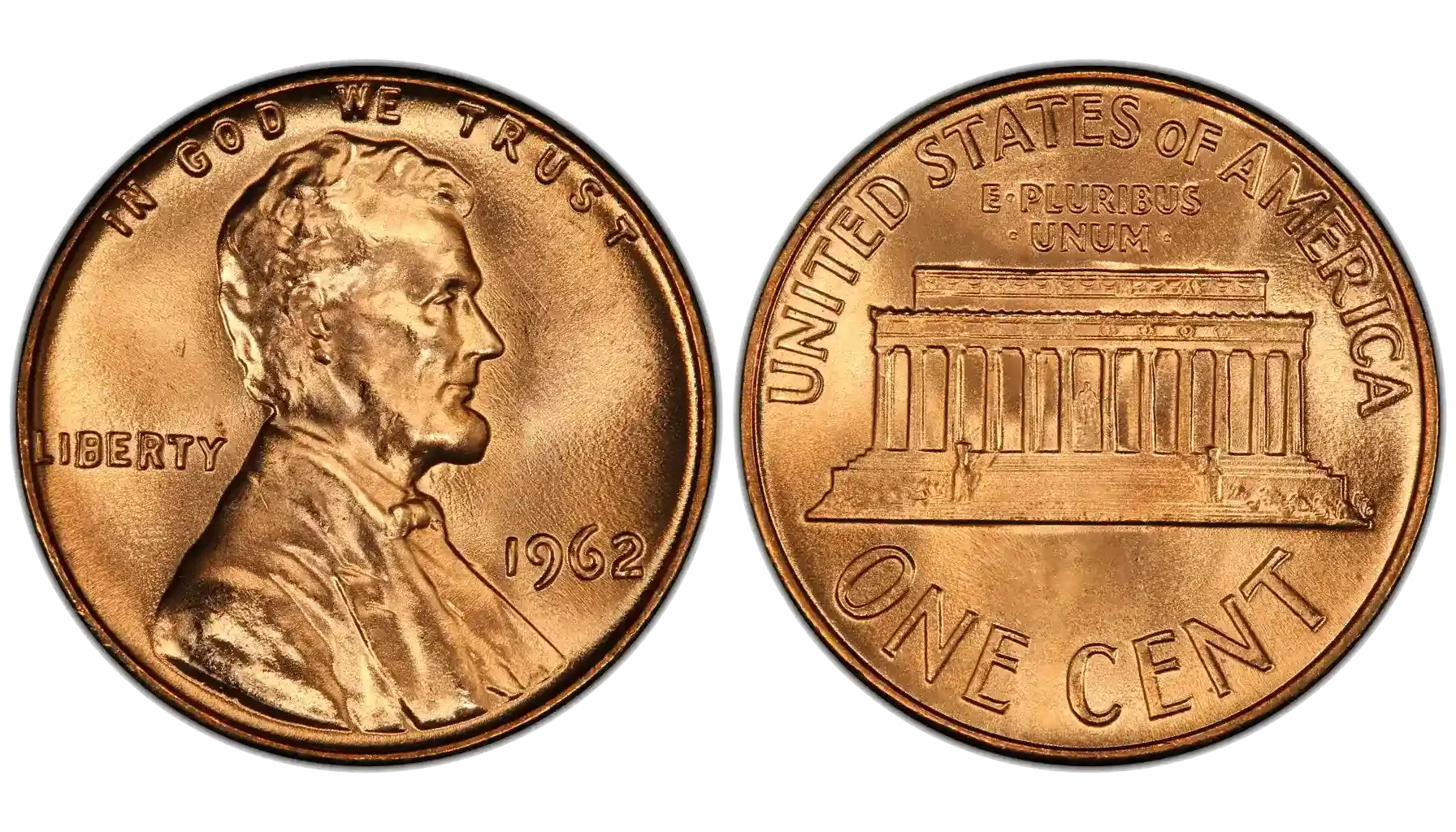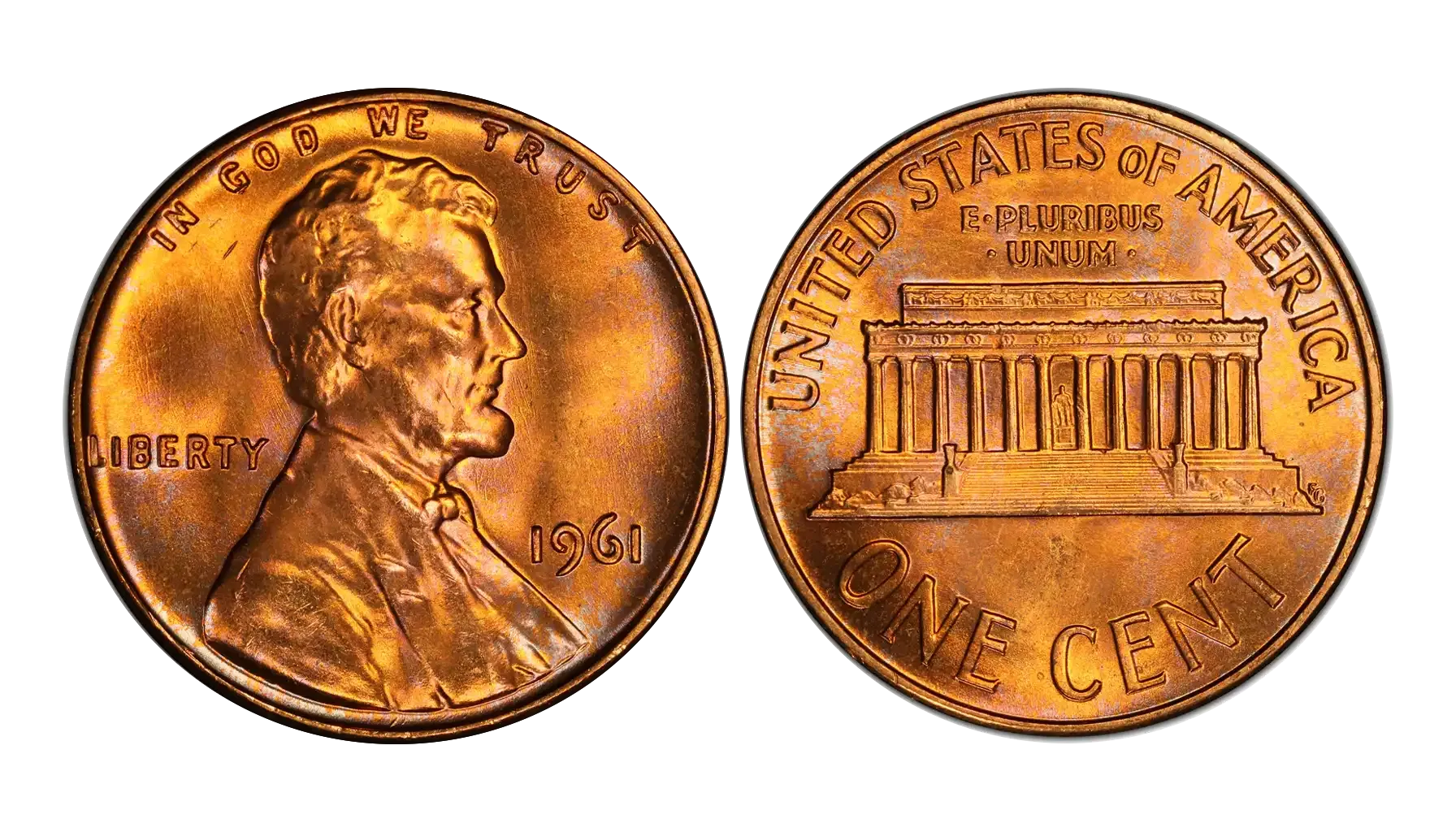Contents:
Sometimes, it is almost impossible to imagine what coins felt like in the past. Indeed, these were the same metal plates of different compositions but could they evoke the same emotions that numismatics brings us today? Creations like the 1881 Morgan silver dollar connect us with the history of coins and let us dive into the psychology of coinage of those times.
By the way, why did we mention the 1881 dollar coin? Why was it so special, and what do professional collectors think of this particular piece? Follow the text, and you will be able to raise awareness in terms of numismatics, check coin value on the spot, and get an idea of what your collection should be.
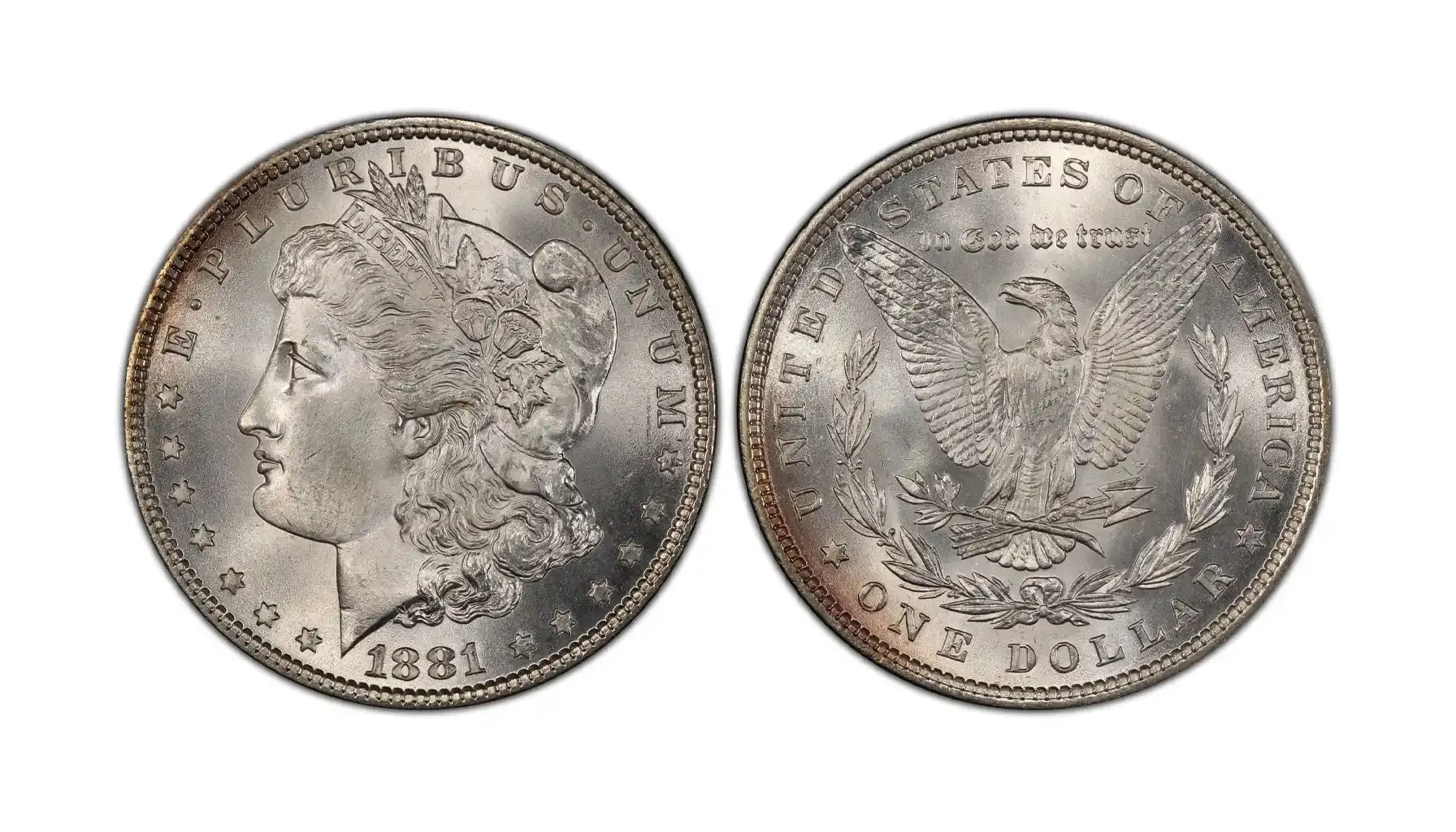
What Happened Before and After 1881?
Coins may be overly valuable, but the stories behind them are priceless.
The 1881 Morgan Dollar was struck during the period when the United States was still trying to estimate the economic effect of the Coinage Act of 1973 and the subsequent Bland-Allison Act of 1878. Before 1881, the production of silver dollars had been significantly increased as a result of the Bland-Allison Act in action. It forced the United States Treasury to purchase and coin enormous quantities of silver each month.
Logically enough, this led to the emergence of Morgan dollars, named after their designer, George T. Morgan. By the late 1870s, there were a few US mints responsible for the production of Morgans. These included Philadelphia, New Orleans, Carson City, and San Francisco. Anyway, the use of silver was not widespread
After 1881, the situation remained mostly the same, although concerns regarding silver coinage stayed elevated. In the late 1880s and early 1890s, discussions about the gold standard vs bimetallism intensified, and there was enacted the Sherman Silver Purchase Act in 1890. This act temporarily increased silver purchases, but it eventually contributed to financial instability, resulting in the notorious Panic of 1893.
So as to address the issue, the government began to reduce silver coinage, and by 1904, the production of the Morgan dollars had been suspended. However, it was once brought back in 1921 for one year just to be replaced by the Peace Dollar for good.
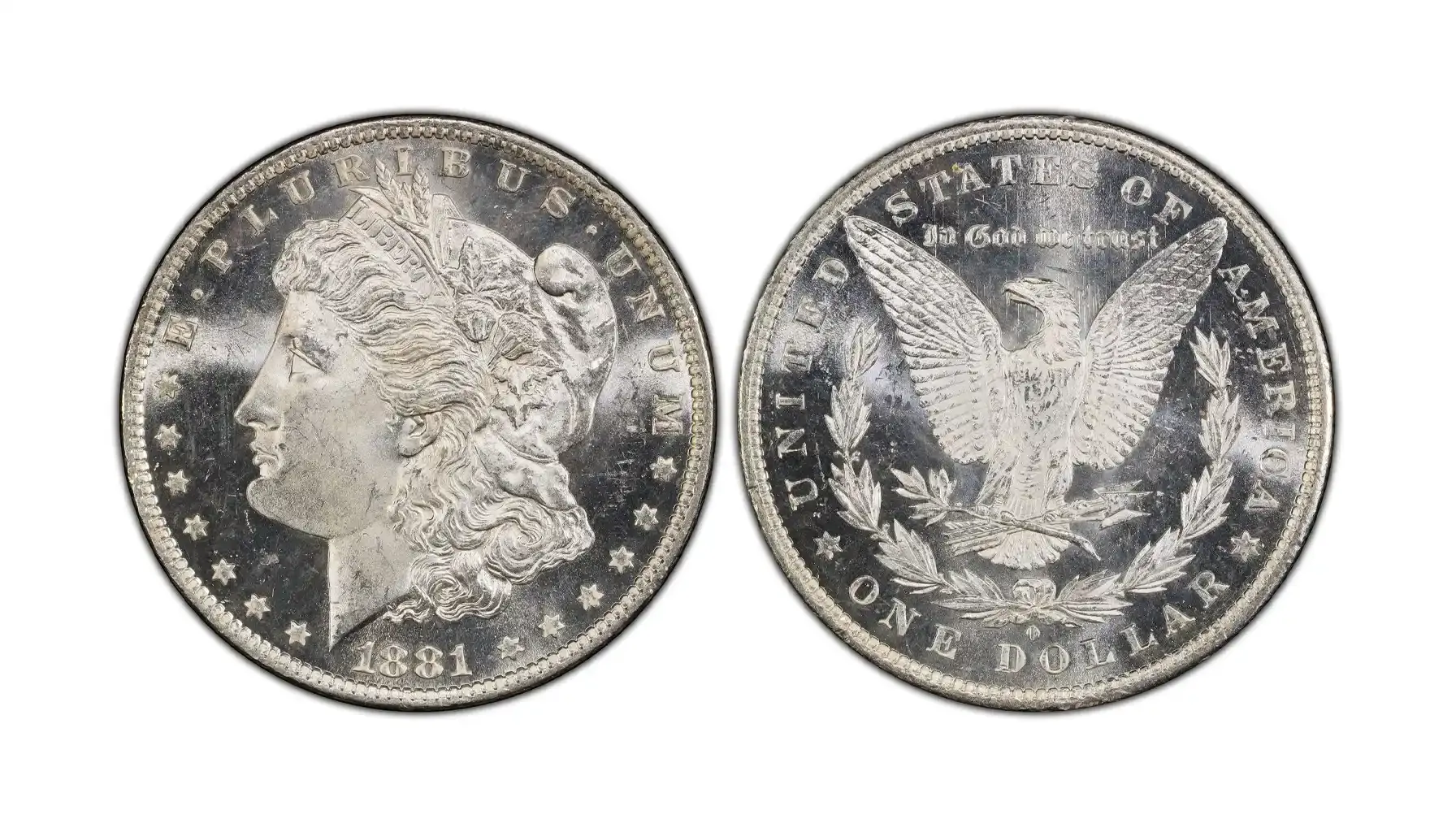
The 1881 Silver Dollar Design
As stated above, the person responsible for the design development was George T. Morgan. The obverse of the 1881 one dollar coin demonstrates a left-facing portrait of Lady Liberty, which was a significant ship that brought the monetary sphere further. Unlike previous classical portrayals, Morgan's Liberty was based on a real person, i.e., Anna Willess Williams, a Philadelphia school teacher.
The portrait is decorated with a Phrygian cap and a wreath of wheat and cotton. Over her head, one may notice the traditional motto "E PLURIBUS UNUM" with the date 1881 written below. Thirteen stars represent the original thirteen colonies.
The reverse, on its part, depicts a majestic eagle with outstretched wings and an olive branch and arrows in its talons. As usual, the eagle is surrounded by the inscriptions "UNITED STATES OF AMERICA", "ONE DOLLAR", and the national motto "IN GOD WE TRUST", as well as the beaded border along the edge.
Related article: 1971 Eisenhower Dollar.
The Main Characteristics of the 1881 Morgan Silver Dollar | |
Designer | George T. Morgan |
Composition | 90% silver, 10% copper |
Weight | 26.73 grams |
Diameter | 38.10 mm |
Thickness | 2.4 mm |
Edge | Reeded |
However, these are not the only characteristics these numismatic creations may boast. To be more precise, there are designations, i.e., a special classification that describes the quality of a surface. As for 1881, during that year, there were released Mint State (MS), Prooflike (PL), and Deep Mirror Prooflike (DMPL) coins.
Mint State (MS) means that coins are uncirculated and exhibit no evidence of wear with possible slight contact marks, light abrasions, or bag marks from storage and handling.
Proof-like (PL) refers to coins with mirror-like reflective surfaces that may exhibit minor flaws or weaker strikes in certain areas. This is not enough to be considered “proof proper”.
Deep Mirror Prooflike (DMPL) coins have more intense mirror-like surfaces and deep, clear reflections and, hence, resemble authentic proof strikes.
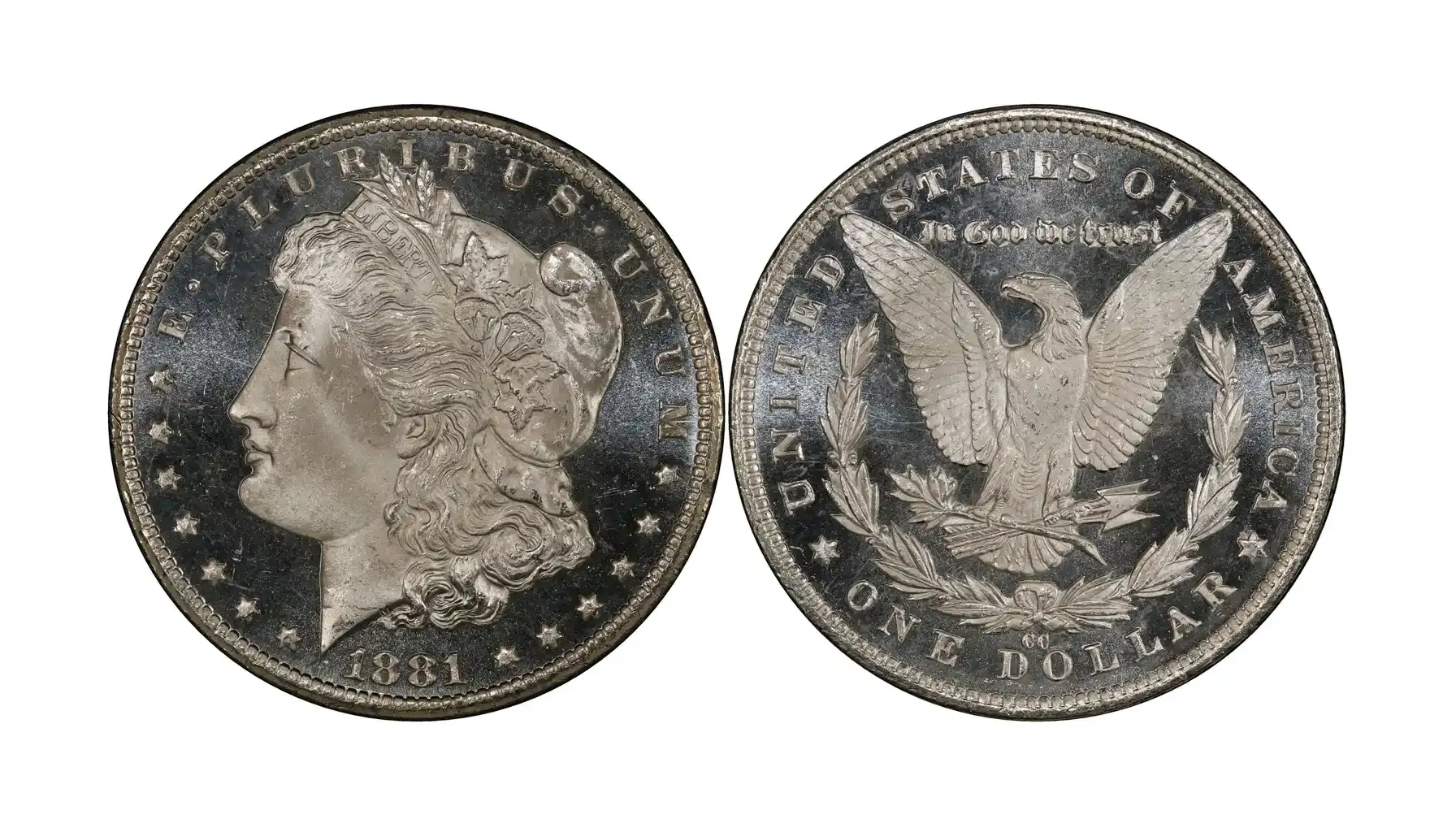
Minting and Distribution
Unlike modern coins which are minted by three major Mints in the US, the 1881 1 dollar coin was produced at FOUR distinct facilities: i.e., Philadelphia (no mintmark), New Orleans (O), San Francisco (S), and Carson City (CC). Let us take a look at the mintage figures, for they do reflect how rare and valuable a coin may be on the market.
Philadelphia (1881 Silver Dollar Value No Mint Mark): 9,163,000
New Orleans (1881 O Morgan Silver Dollar): 5,708,000
San Francisco (1881 S Morgan Silver Dollar): 12,760,000
Carson City (1881 CC Morgan Silver Dollar): 296,000
Although the amount of coins produced was impressive, these were not widely utilized in daily transactions. In turn, many were kept in bank reserves and Treasury vaults (particularly in the eastern part of the country), while the western states could boast a bit higher level of circulation. By the mid-twentieth century, there were found hoards of uncirculated Morgan samples.
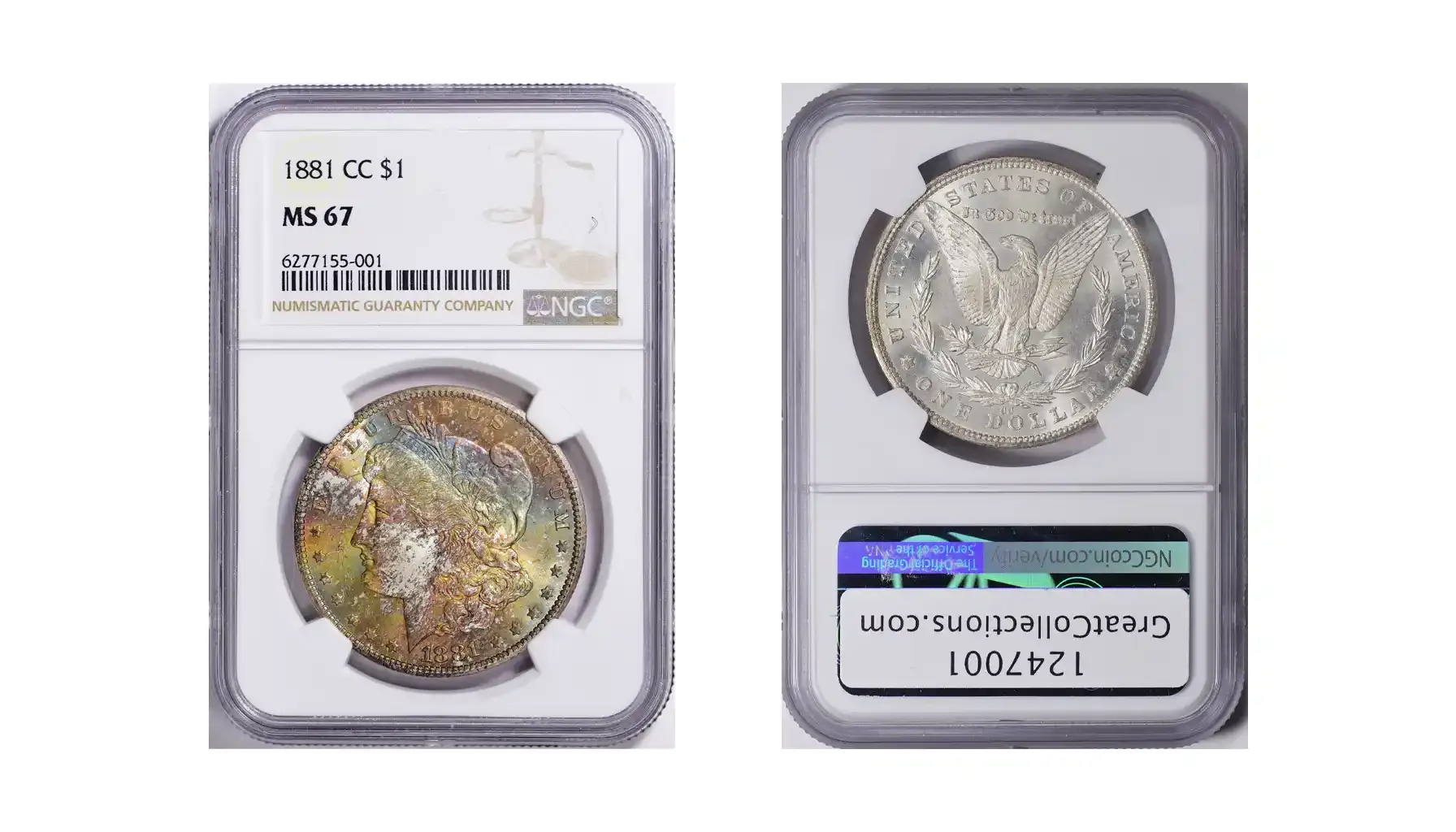
The Value of 1881 Silver Dollar
The 1881 silver dollar value is mainly defined by its place of origin indicated by a mint mark, condition (i.e., the official grade attributed by PCGS, NGC, or the like), and special designations such as Prooflike (PL) and Deep Mirror Prooflike (DMPL) in particular.
Mintmark: Carson City (CC) pieces are considerably rarer and more valuable than those from Philadelphia, New Orleans, or San Francisco.
Grade: Higher-graded coins (MS65 and above) command higher prices, too.
Designations: PL (Prooflike) and DMPL (Deep Mirror Prooflike) coins are often more desirable than standard Mint State coins.
Coin | Grade | Auction Record |
1881 $1 | MS67 | $28,200 |
1881 $1, PL | MS65 | $7,695 |
1881 $1, DMPL | MS66 | $26,400 |
1881 O $1 | MS66+ | $39,950 |
1881 O $1, PL | MS66 | $9,988 |
1881 O $1, DMPL | MS65 | $40,250 |
1881 S $1 | MS69 | $48,875 |
1881 S $1, PL | MS66 | $23,500 |
1881 S $1, DMPL | MS68 | $40,250 |
1881 CC $1 | MS68 | $67,563 |
1881 CC $1, PL | MS67 | $9,000 |
1881 CC $1, DMPL | MS67+ | $228,000 |
*This data is entirely subjective and should not be considered a definitive standard. For a more accurate evaluation, please appeal to Coin ID Scanner to get the most up-to-date information about the coin, e.g., a John Adams one, its market potential, distinctive features, and more.
The older the coin, the higher the price. Yet, this should not stop beginner numismatists from exploring the world of coin collecting. There are still plenty of opportunities to find valuable specimens within reach for newcomers. What if you accidentally come across the 1881 Morgan sample and introduce it in the collection in the end?

